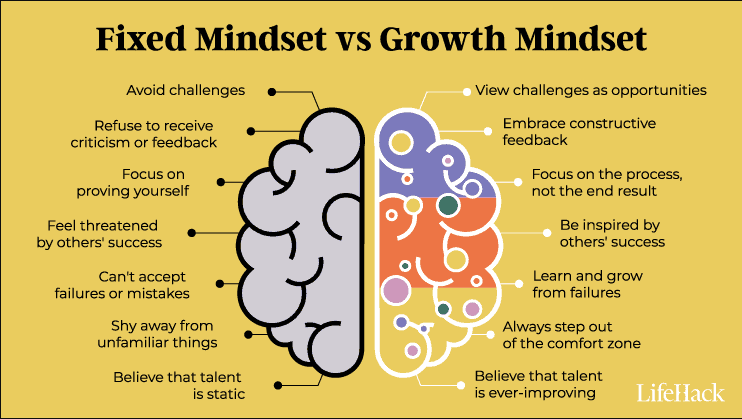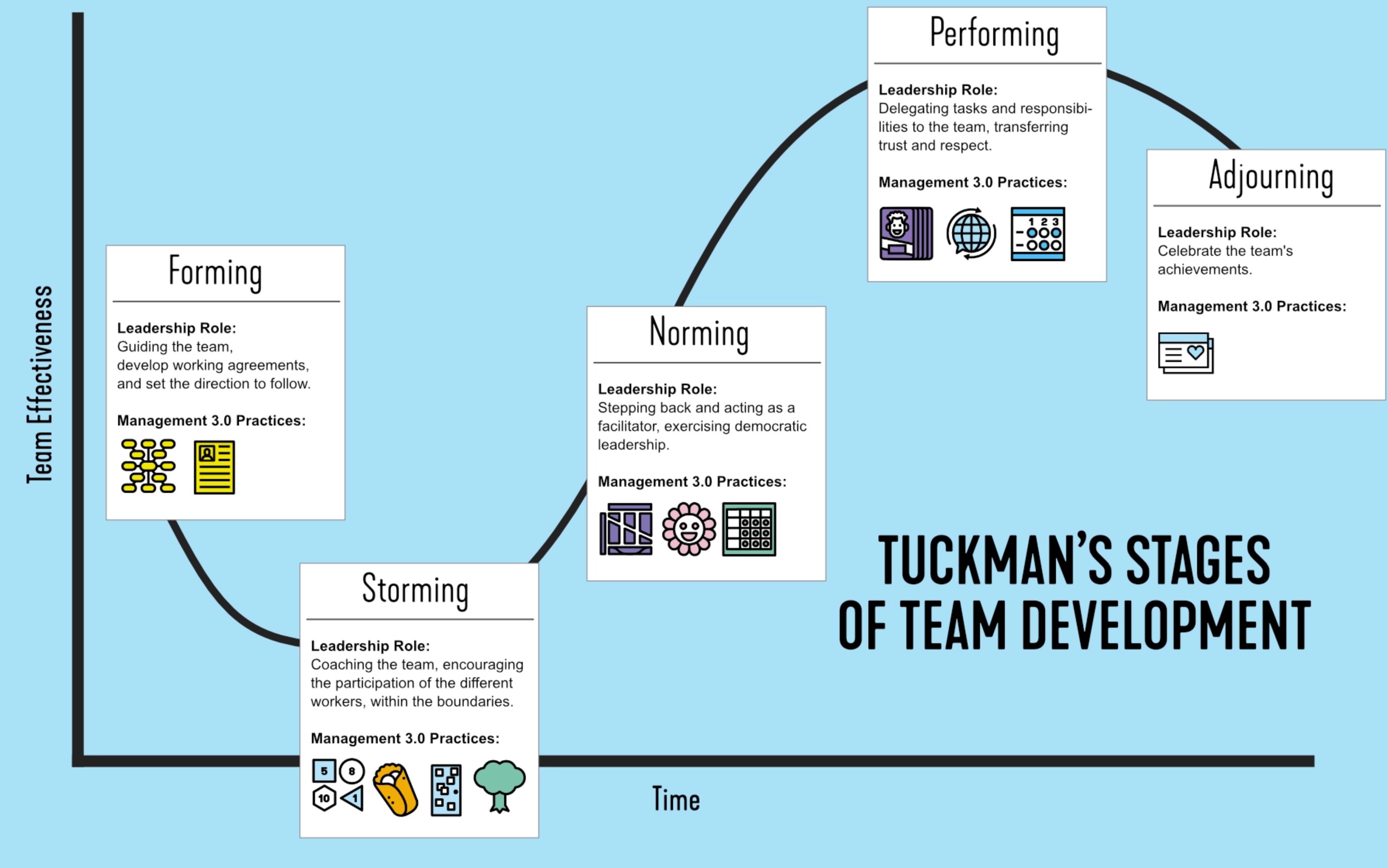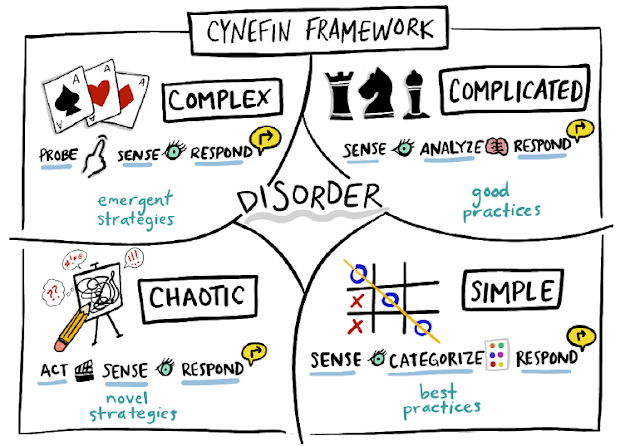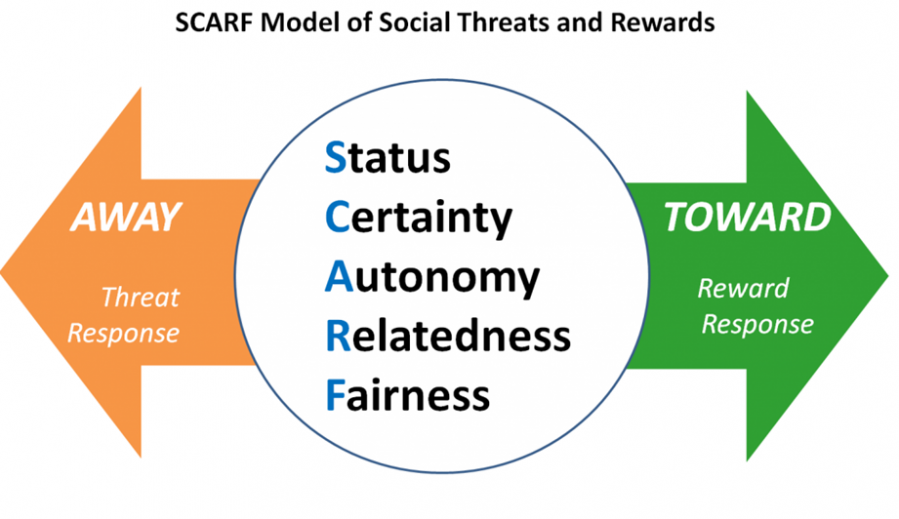Leadership models II: Growth Mindset, Eisenhower Matrix, Tuckman Model, Cynefin Framework, SCARF Model
Marton Trencseni - Sun 14 May 2023 - Leadership
Introduction
This year I'm attending a multi-day leadership course that spans 6 months. One of the things the coaches talk about is various mental models useful in leadership and self-management. These are some of the mental models mentioned in the course.
Growth Mindset
The Growth Mindset is a concept introduced by psychologist Carol Dweck in her book "Mindset: The New Psychology of Success." It is centered around the belief that intelligence, abilities, and talents can be developed through effort, learning, and persistence. The Growth Mindset contrasts with the Fixed Mindset, which assumes that these traits are innate and unchangeable. The core tenets of the Growth Mindset are:
- Embrace challenges: People with a growth mindset see challenges as opportunities for growth and development. They are more likely to take risks, try new things, and persist in the face of difficulties.
- Value effort: In a growth mindset, effort is seen as a critical factor in achieving success. Hard work, dedication, and practice are valued as essential components of improvement and growth.
- Learn from criticism and feedback: Individuals with a growth mindset are open to constructive criticism and feedback, viewing it as an opportunity to learn and improve their skills and understanding.
- Be inspired by others' success: Instead of feeling threatened by the success of others, people with a growth mindset are inspired by it. They see the achievements of others as evidence that they too can improve and succeed.
- Focus on continuous learning: A growth mindset prioritizes learning and self-improvement over simply proving oneself or maintaining a specific image. People with a growth mindset are lifelong learners, always looking for ways to expand their knowledge and abilities.
- Develop resilience and persistence: Individuals with a growth mindset are more likely to persevere in the face of setbacks and obstacles. They understand that failure is a natural part of the learning process and an opportunity to learn, adapt, and grow.

Cultivating a growth mindset can lead to increased motivation, higher achievement, and greater overall satisfaction in both personal and professional aspects of life. By embracing the principles of the growth mindset, individuals can unlock their full potential and foster a love of learning and self-improvement.
Eisenhower Matrix
The Eisenhower Matrix is a time management tool that helps individuals prioritize tasks by urgency and importance. The tool is named after Dwight D. Eisenhower, the 34th President of the United States, who is attributed with saying, "I have two kinds of problems, the urgent and the important. The urgent are not important, and the important are never urgent."
The matrix consists of a 2x2 grid, creating four quadrants:
- Quadrant I - Important and Urgent: These are tasks that need to be done immediately. They often involve critical issues that carry significant consequences if not addressed promptly. Examples could include crises, deadlines, or problems that need immediate attention.
- Quadrant II - Important but Not Urgent: These are tasks that contribute to long-term goals and values but do not need to be done immediately. This quadrant often involves strategic planning, relationship building, personal growth, and preventive activities. Spending more time on these tasks can reduce the frequency of urgent issues arising.
- Quadrant III - Not Important but Urgent: These tasks require immediate attention but do not contribute significantly to achieving long-term goals or values. They often involve interruptions or distractions, such as unimportant emails, phone calls, or meetings. These tasks can often be delegated to others.
- Quadrant IV - Not Important and Not Urgent: These tasks do not contribute to long-term goals and do not require immediate attention. They often involve time-wasting activities or tasks that offer little to no value. These tasks should be minimized or eliminated.

The core tenets of the Eisenhower Matrix include:
- Distinction between Urgency and Importance: Recognizing that urgent tasks are not always important, and important tasks are not always urgent, is key to effective use of the matrix.
- Prioritization: The matrix helps individuals prioritize tasks based on their importance and urgency, leading to more effective time management and productivity.
- Delegation: Tasks that are urgent but not important can often be delegated to others, freeing up time for more important activities.
- Elimination: Unimportant and non-urgent tasks should be eliminated as they consume time and resources without contributing to long-term goals or values.
- Focus on Quadrant II: The goal is to maximize time spent on Quadrant II activities, which contributes most to long-term success and can prevent issues from becoming urgent crises.
By using the Eisenhower Matrix, individuals can manage their time more effectively, focusing on what truly matters and reducing stress and burnout.
Tuckman Model
The Tuckman Model, also known as Tuckman's Stages of Group Development, is a framework proposed by psychologist Bruce Tuckman in 1965 to describe the path that most teams follow on their way to high performance. The model outlines four distinct stages:
- Forming: The initial stage of team development where team members are polite and positive, but also anxious as they haven't fully understood what work the team will do. There is typically a focus on defining the team's goals, structure and leadership, with team members starting to take on roles and responsibilities.
- Storming: As team members start to work together, they begin to push against the boundaries established in the forming stage. This can result in conflict within the team as individuals jockey for position, resist control by group leaders, and start voicing differing opinions about the team's direction. Despite its name, the "storming" phase isn't always a negative space -- it can also be a time of healthy, constructive debate.
- Norming: Gradually, the team moves into the norming stage, where people start to resolve the conflicts that surfaced during the storming stage. The team becomes more aware of their collective goals, and they begin to appreciate each other's skills and experience. Norms and roles are established, and the team becomes more cohesive and functional.
- Performing: The team reaches the performing stage when hard work leads, without friction, to the achievement of the team's goal. The structures and processes that you have set up support this well. As a leader, you can delegate much of your work, and you can concentrate on developing team members. It's often characterized by high levels of trust, autonomy, and interdependence.
- Later, Tuckman added a fifth stage, Adjourning (or "Mourning"), where the team completes the work and moves on from the project. This can be a challenging stage as team members may have developed strong bonds and may feel a sense of loss upon the project's completion.

The core tenets of the Tuckman Model are:
- Sequential Development: Teams tend to develop in stages, each of which presents unique challenges and opportunities for growth and development.
- Conflict as a Natural Part of Development: Conflict isn't necessarily a bad thing, and can be a natural part of the team development process.
- The Role of Leadership: The leader's role may change at each stage, from giving direction in the forming stage to fostering independence and competence in the performing stage.
- The Importance of Clear Goals and Roles: Clear goals and well-defined roles can facilitate the team's progress through each stage.
- Transition and Closure: Teams should acknowledge and plan for the end of the project or task, helping team members transition and bring closure to the experience.
Cynefin Framework
The Cynefin Framework, developed by Dave Snowden, is a decision-making model that helps leaders and organizations navigate the complexity of different problems and determine the most appropriate approach for each situation. The framework categorizes problems or contexts into five domains, each with its unique characteristics and recommended strategies:
- Simple: In this domain, problems have clear cause-and-effect relationships and can be solved using established best practices. The recommended approach is to sense the situation, categorize the problem, and then respond using known solutions.
- Complicated: Problems in this domain have multiple possible solutions, and cause-and-effect relationships can be determined with expert analysis. The recommended approach is to sense the situation, analyze the problem using expert knowledge, and then respond with the most suitable solution.
- Complex: In this domain, cause-and-effect relationships can only be understood in retrospect due to the unpredictable nature of the problem. The recommended approach is to probe the situation by conducting experiments, sense the emerging patterns, and then respond by adapting to the evolving conditions.
- Chaotic: Problems in this domain are characterized by high levels of uncertainty, with no apparent cause-and-effect relationships. The recommended approach is to act immediately to stabilize the situation, sense the new conditions, and then respond by adapting or creating novel solutions.
- Disorder: This domain represents situations where it is unclear which of the other four domains applies. The objective in this context is to gather more information, break the problem down into smaller components, and then assign each component to the appropriate domain for further action.

By understanding the nature of a problem and determining which domain it falls into, leaders can use the Cynefin Framework to choose the most appropriate decision-making approach and improve their ability to address complex and unpredictable challenges.
SCARF Model
The SCARF Model is a social cognitive neuroscience model devised by Dr. David Rock. SCARF stands for Status, Certainty, Autonomy, Relatedness, and Fairness. These are the five key domains that influence our behavior in social situations:
- Status: This refers to relative importance to others. Status is about where you rank in relation to those around you. Threats to status, such as feeling inferior or being disrespected, can be incredibly powerful in driving behavior.
- Certainty: This pertains to our ability to predict the future. The brain craves certainty to make accurate predictions about the world. Uncertainty provokes a threat response and can therefore be stressful and draining.
- Autonomy: This concerns the sense of control over events. Having a sense of autonomy, the feeling that you have some control over your environment, is crucial for our sense of wellbeing. A lack of autonomy can lead to stress, which impairs performance and morale.
- Relatedness: This involves the sense of safety with others, of being 'in' or 'out' of a social group. It reflects our need to feel connected to others. When we perceive someone as being in our 'in-group', we work more collaboratively and cooperatively with them.
- Fairness: This reflects the perception of fair exchanges between people. The perception of unfairness can provoke a strong threat response and can significantly impact workplace performance and engagement.
These concepts are all drawn from neuroscience research which suggests that the brain treats many social threats and rewards with the same intensity as physical threats and rewards. For instance, a perceived threat to one's status activates the same brain networks as a threat to one's life. By understanding these triggers, leaders and managers can learn to minimize threats and maximize rewards to help their teams be more effective, engaged, and collaborative.
